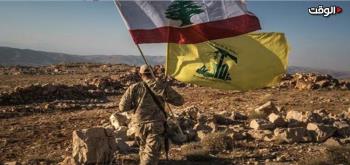Alwaght- The Indian-controlled Kashmir saw its largest strikes protesting new land law since the government stripped the region of its semi-autonomy last year. The strikes are coming by angry local people protesting a new law by the nationalist government of Prime Minister Narendra Modi that introduced a law allowing the non-locals to buy lands in Kashmir after several decades of ban.
In August 2019, the government altered the constitution and revoked the special status, or limited autonomy, granted under Article 370 of the Indian Constitution to Jammu and Kashmir. Until last year, the non-local citizens had no right to buy lands in Kashmir. The new law canceled privileges in farming and jobs for the local people, triggering massive protests that were met by an iron hand and shutdown of the Internet.
This week New Delhi ramped up its measures against the Kashmiris, revoking laws according to which only the 12 million permanent inhabitants of Kashmir could have lands there.
The new law also revoked land reforms of the 1950s that distributed vast lands among the landless farmers. The new laws say that although the farming lands cannot be sold or used for non-agricultural purposes, repurposing is allowed under special permission particularly from the governor of the region. A couple of days after the new laws, the government appropriated 24,000 land pieces to the industrial and commercial sectors to expand investment. A couple of days after permission was issued by the Ministry of Environment and Forests, the lands were transferred to private firms for construction of 65 mansions, reports said.
Following the move, shops and businesses in Kashmir shut down as there was a call by a coalition of political and religious groups for protest on Saturday. As a result, public transportation has been crippled and the security forces are patrolling the deserted streets. Over 500,000 troops are positioned in Kashmir, bearing witness to the fact that the government is determined to forcefully address the demonstrations and possible riots in the coming days.
The Kashmiris accuse the government of pushing towards demographic change in the only major bastion of the Muslim majority in Kashmir. Even pro-government Kashmiri groups objected to the changes, arguing that the new measures are part of Modi’s nationalist clampdown that also allow the Indian military to announce “strategic” and seize any region it wants for training and operational missions.
Omar Abdullah, the former chief minister of Kashmir who was arrested last year during a raid on his home, said that Kashmir is “out for sale” by New Delhi and is devoid of any basic supports.
“The reforms add to the fears of systematic demographic changes,” he said, adding “they want to change Kashmiris identity.”
The Hurriyat Conference, led by senior cleric Mirwaiz Umar Farooq, in a statement called the public strike an “appropriate response” to the central government and a “decisive rejection” of the measures “ against people” adopted by New Delhi since August 2019.
Sources close to the Conference said that the group’s leaders have been detained and “tortured” for their show of substantial support for the strike calls.
Mirwaiz has been put under house arrest since August 5 last year. His fellow group members like Abdul Ghani Bahat, Belal Ghani Loul, and Masrour Abbas Ansari on Wednesday in a statement lashed out at the anti-popular orders issued by the government aimed at frightening people and torturing them psychologically.
The Kashmiris and Indian opposition see the recent moves by the government as a “colonial” project of settling the migrants to give the region demographic changes meant to reduce the Muslim majority over time. The policy takes its cues from similar policies in West Bank, Tibet, and northern Syria.
Kashmir conditions influenced by regional competition
Pakistan has been pushing for internationalization of the dispute to prevent the annexation of Kashmir to mainland India. Kashmir's case was opened in the United Nations Security Council in 1948. It turned into a cold case since 1965 and even the discussions raised by the UNSC on Pakistan and India following the 1971 war mainly focused on the East Pakistan region rather than Kashmir. Since 2010, the UNSC removed Kashmir from the list of unsettled cases, marking a major diplomatic defeat to Pakistan.
When in August last year, the Indian government decided to revoke the semi-autonomy status of Kashmir, Pakistan renewed its push, mainly through China as a powerful global actor and UNSC veto holder, to blast India’s measures. But the push faced opposition from other UNSC members, to Islamabad’s frustration. Members of the UNSC say that the Kashmir case is bilateral and should be settled between the neighbors without resorting to the international organizations. Beijing used its veto power to bring back the case to the UN agenda.
Over the recent years, Beijing has turned into a strategic ally for Pakistan, as over the past months has been in border tensions with India in the Ladakh region. Meanwhile, the US and other Western powers, which are empowering India to put the skids under the Chinese power gain, closed their eyes to New Delhi’s crisis making steps in Kashmir. These developments prepare the ground for more confidence gain by the right-wing Modi government to pursue serious changes to Kashmir status.



























